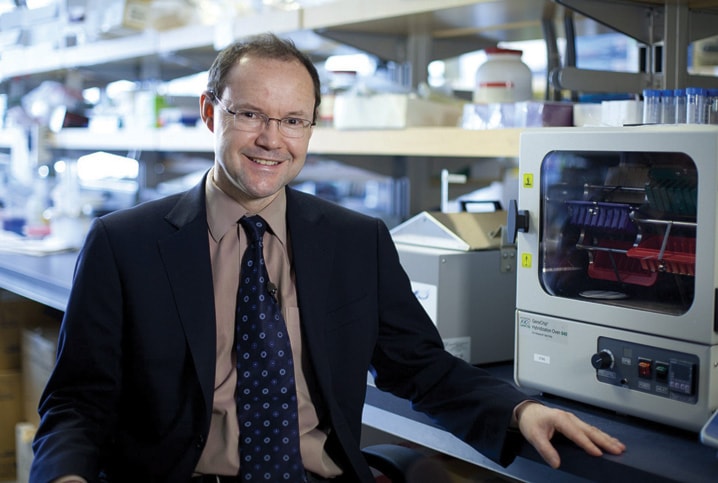When scientists at the B.C Cancer Agency studied the genetic signatures of three different types of cancer, they expected each tumour would have its own distinct abnormalities.
But to their surprise, the researchers discovered that the tumours — rare forms of ovarian, uterine and testicular cancers — all exhibited the same genetic flaw.
They were amazed to discover that the same mutation in what’s known as the DICER gene showed up as the common process underlying all the different cancers they examined.
“And so what we’re looking at is a series of cancers which no one would ever have binned together before, which share mutations in the same gene,” genetic pathologist Dr. David Huntsman said Wednesday from Vancouver.
“And it suggests that maybe we need to start rethinking the way we define cancers,” said Huntsman, co-principal author of a paper on the research published online Wednesday by the New England Journal of Medicine.
“Once you start defining cancers by what they are, rather than where they occur, you find that there are cancers across the body that share features, which perhaps could be treated the same way.”
Huntsman said that once scientists determine what the mutated DICER gene does exactly and figure out a way to target it, “you could have a treatment that is applicable across a group of cancer types, which no one would ever have considered putting together in a clinical trial.”
While it’s known that the gene is a master regulator of many cellular processes in the body, thereby playing an important role in maintaining health, little had been known until now about the gene’s role in cancer.
“This discovery shows researchers that these mutations change the function of DICER so that it participates directly in the initiation of cancer, but not in a typical ’on-off’ fashion,” said medical geneticist Dr. Gregg Morin, who led the study with Huntsman.
“DICER can be viewed as the conductor for an orchestra of functions critical for the development and behaviour of normal cells,” he said.
“The mutations we discovered do not totally destroy the function of DICER, rather they warp it — the orchestra is still there but the conductor is drunk.”
Studying rare tumours is important for patients and the families in which they tend to occur, but at the same time it increases knowledge about cancers in general, said Huntsman.
“The actual value of the discovery may not be in the disease where we made that discovery, it’s more likely to be in the other cancers which we’re just exploring right now.”
Using advanced genome-sequencing equipment, the team is looking to see if other cancers — among them primitive muscle tumours and certain sarcomas (connective tissue cancers) — also exhibit the DICER mutation.
Huntsman hopes their paper will prompt other scientists worldwide to build on the research by doing genetic testing on other types of tumours.
“This breakthrough will be of interest to both the clinical and the fundamental science communities,” commented MIT professor Phillip Sharp, co-winner of the 1993 Nobel Prize in physiology and medicine for the discovery of the structure of genes.
“Huntsman, Morin and colleague’s very exciting discovery of specific mutations in DICER ... could lead to new approaches to treatment,” he said.
